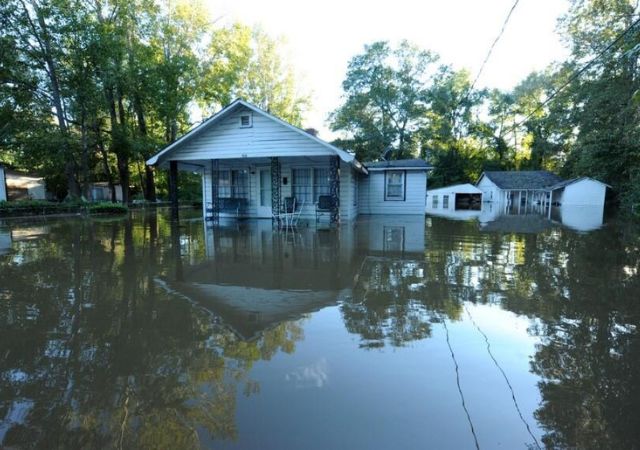Flooding can be a major concern for homeowners and businesses, especially those located in areas prone to heavy rainfall or near bodies of water. The damage caused by floods can be significant, resulting in costly repairs and lost property. Fortunately, there are ways to prevent or minimize the impact of flooding, including the use of reusable water barriers.
Whether you are a homeowner looking to protect your property or a business owner looking to safeguard your assets, reusable water barriers are an effective way to prevent flooding. By taking proactive measures to protect your property, you can avoid the costly and time-consuming repairs that often come with flood damage. With the right preparation and tools, you can minimize the impact of flooding and keep your property safe and secure.
How Floods Happen
Floods occur when there is an overflow of water that submerges land that is usually dry. There are a variety of factors than can result in flood. Examples include heavy rainfall, melting snow, coastal storms, and hurricanes. When there is too much water for the ground to absorb, it can lead to flash flooding and river flooding.
Flash flooding happens quickly and is often occurs because of intense rainfall over a short period of time. River flooding, on the other hand, happens more slowly over a longer period of time and can be caused by sustained rainfall or snowmelt. Coastal flooding can happen when there is a storm surge, which is when strong winds push water onto the shore.
Why Flood Prevention is Important
Flooding can cause significant damage to homes, businesses, and infrastructure. It can also lead to loss of life and displacement of people from their homes. By preventing floods, we can reduce the risk of damage and loss of life.
Additionally, flood prevention can help protect the environment. Floods can cause erosion, damage to ecosystems, and pollution from debris and chemicals. By preventing floods, we can help protect natural habitats and prevent damage to wildlife.
One way to prevent flooding is by using reusable water barriers. These barriers can be quickly deployed to divert water away from vulnerable areas and protect properties from damage. They are reusable, making them a cost-effective and sustainable solution for flood prevention.
What are Reusable Water Barriers?
Reusable water barriers are a practical, cost-effective and eco-friendly way to protect your home or property from flood damage. They are made of durable materials and can be filled with water to create a barrier that can contain, control, and divert floodwater. They can be used to divert water away from buildings, block doorways and other openings, and create a barrier to prevent water from entering a property.
Water barriers are easy to use, lightweight and can be set up within minutes. Reusable water barriers are designed to be used multiple times, making them an affordable and sustainable alternative to traditional sandbags. Unlike sandbags, which can be strenuous and time-consuming to fill, reusable water barriers are easy to use and can be emptied and stored when not in use.
Types of Reusable Water Barriers
There are several types of reusable water barriers available on the market. Here are some of the most common types:
- Water-filled barriers: These barriers are filled with water to create a barrier that can contain and divert floodwater. They are easy to set up and can be linked together to create a larger barrier.
- Water-activated barriers: These barriers are designed to absorb and swell on contact with water, creating a durable barrier that can protect your property from flood damage.
- Self-inflating barriers: These barriers inflate automatically when they come into contact with water, creating a barrier that can protect your property from flood damage.
- Hybrid barriers: These barriers combine the features of water-filled and water-activated barriers to create a durable and effective flood protection solution.
No matter which type of reusable water barrier you choose, it is important to follow the manufacturer’s instructions for proper installation and use. With the right barrier in place, you can protect your home or property from the devastating effects of flooding.



